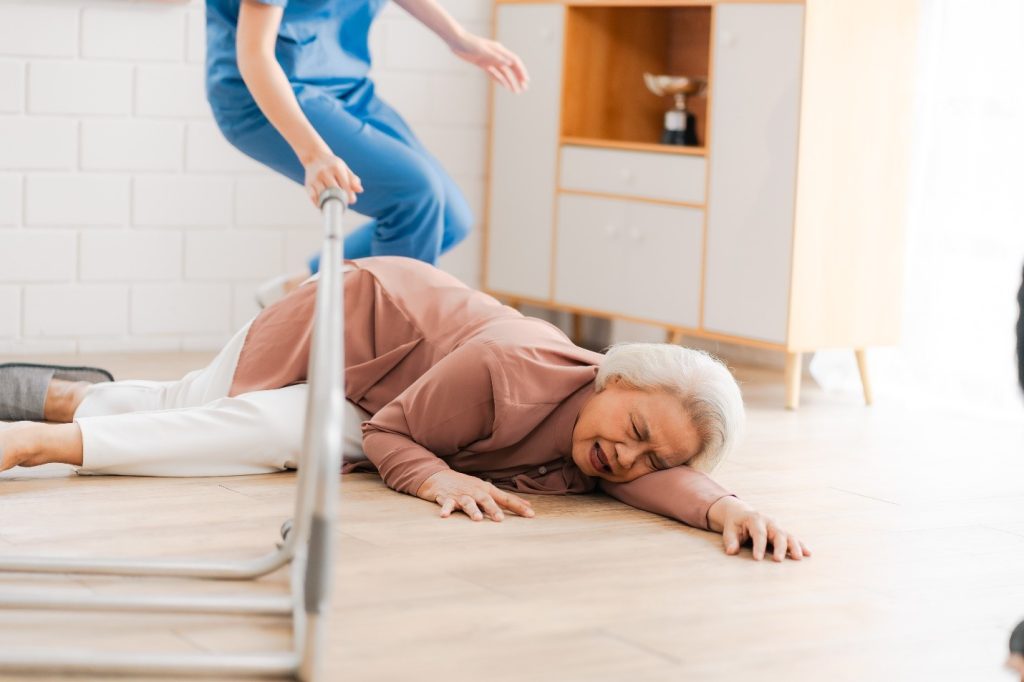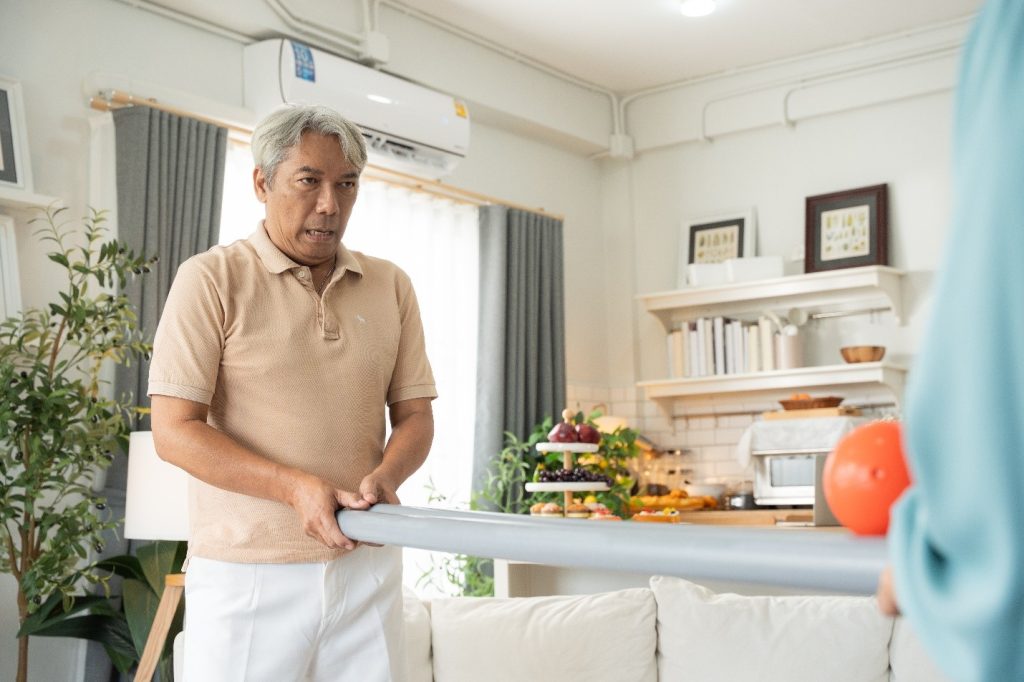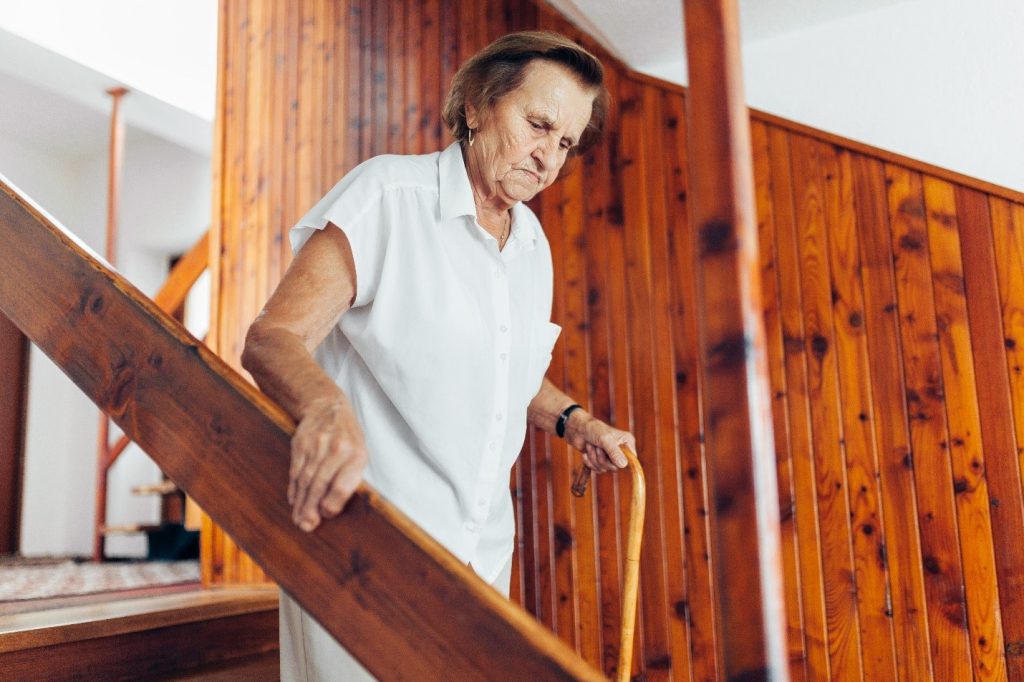A fall can change a senior’s life in an instant. For many older adults across Canada, the desire to remain at home grows stronger with age, and yet the risks of falling increase with every passing year. Families and caregivers alike worry about safety, but the good news is that thoughtful planning, supportive care, and practical adjustments can reduce these risks dramatically. When fall prevention is prioritized, aging in place becomes safer, healthier, and more sustainable.
Understanding the Scale of the Problem
Across Canada, falls are the leading cause of injury-related hospitalizations among seniors. Research on senior safety in Canada highlights that even one fall can have serious consequences, ranging from long hospital stays and reduced mobility to, in some cases, the permanent loss of independence.
Beyond physical injuries like fractures, a fall often leaves behind lingering fear. This loss of confidence can discourage seniors from staying active, creating a cycle of worry that leads to greater weakness and a higher risk of future falls. By prioritizing prevention, seniors and families can break this cycle, thus protecting overall well-being, maintaining independence, and reducing the chance of serious harm.
The Home as a Safer Living Environment
The home environment is the most common site of senior falls. Kitchens, bathrooms, and stairways pose particular challenges. Rugs that slide, poor lighting, and cluttered walkways increase hazards that can often be avoided with simple adjustments. A fall prevention home approach begins with careful attention to these high-risk areas.

Some of the most effective measures include:
- Installing grab bars near bathtubs, showers, and toilets.
- Adding sturdy railings on stairways for reliable support.
- Using slip-resistant flooring in areas that often become wet.
- Placing bright, consistent lighting in hallways and entryways.
- Removing loose rugs, taping down wires, and keeping walkways clear.
Families who choose professional caregiving often begin with a home safety review, as trained caregivers can spot risks that may go unnoticed by others. The resulting adjustments create a safer environment and give seniors the confidence to continue living comfortably in their own homes.
The Role of Health Care in Fall Prevention
Creating a safe home environment is an essential step in fall prevention, but it is not the whole picture. True safety for seniors also depends on maintaining health and mobility through daily habits and guided support.
Home environmental changes are only part of the solution. Health and mobility play equally important roles in reducing risk. Strong muscles, steady balance, and flexible joints all contribute to safer movement. Regular exercise programs, often guided by physiotherapists or recommended through trusted home care tips, can build both mobility and confidence. Even simple activities such as chair exercises, gentle stretching, or guided walking routines can go a long way in maintaining balance and supporting independence.

Nutrition also matters greatly. Adequate intake of calcium and vitamin D supports bone strength, while hydration contributes to stability and alertness. Medications must be reviewed regularly with healthcare providers, because certain prescriptions may cause dizziness or affect balance. Caregivers play a vital role in promoting well-being, whether by providing medication reminders, preparing nutritious meals, or encouraging regular activity. Their steady support turns good intentions into lasting, healthy habits.
Supportive Devices and Technology
For many older adults, mobility aids reduce fall risk significantly. Canes, walkers, and supportive footwear contribute to stability. Home-based monitoring systems can detect falls and alert family members or emergency services quickly. Families who follow senior safety in Canada guidelines often integrate technology in care, such as motion-activated lights or wearable emergency pendants.
These devices provide an added layer of security but require consistent use, and caregivers can help seniors feel comfortable with them. The reassurance of knowing help is near allows seniors to continue moving around their homes with greater confidence.
The Psychological Impact of Falls
The fear of falling often creates mental barriers as damaging as the physical injuries themselves. After one fall, many seniors limit activities, reduce walking, and avoid movement. That inactivity weakens muscles and increases isolation, creating a cycle that heightens risk. Families frequently see this change in behaviour and worry that their loved one may lose independence altogether.

Support from caregivers can make a significant difference. Caregivers offer steady reassurance, accompany seniors during daily activities, and provide assistance with mobility so that confidence gradually returns. This emotional support often matters as much as physical safety features.
Home Care as a Subtle Safety Net
Every family wants their loved ones to live safely and with dignity. For many households across Canada, the solution lies in aging in place with reliable home support. Professional caregivers contribute in ways that extend beyond daily tasks. They assist with bathing, meal preparation, and medication reminders, but they also monitor safety risks in real time. Their presence reduces the chance of accidents during vulnerable moments, such as stepping into the shower or navigating stairs.
For families who cannot be present around the clock, caregivers provide reassurance that loved ones are safe, without taking away their independence. This thoughtful balance between assistance and autonomy makes home care one of the most effective ways to prevent falls.
The Value of Personalized Routines
No two seniors have the same needs, which is why a personalized care approach matters. One person may require mobility support several times each day, while another may simply need companionship and occasional assistance. Caregivers help establish safe daily routines, from reorganizing furniture for easier movement to planning rest breaks that reduce fatigue.
These small but consistent measures prevent accidents while reinforcing stability. Families often discover that a caregiver’s presence transforms careful plans into consistent, everyday care.
Community Programs and Family Involvement
Fall prevention also extends into community resources. Across Canada, local organizations promote exercise classes, home safety workshops, and caregiver education. These programs often meet senior safety standardsin Canada, giving families a structured way to approach safety planning. Relatives play an important part as well, since they can encourage participation, arrange checkups, and stay informed about risks.
Busy schedules and distance often make it hard for families to be involved every day. In these moments, professional caregivers step in, providing consistent support that enhances family care rather than replacing it.
Practical Examples of Preventive Strategies
Consider a senior living in a two-story house with steep stairs. A fall prevention strategy might include installing a stairlift, adding strong railings, and placing night lights at every landing. A caregiver can assist further by accompanying the senior on stairs, encouraging safe practices, and handling tasks that involve frequent climbing.
Another common situation involves bathroom safety. Some helpful adjustments include:
- Adding non-slip mats inside and outside showers.
- Installing raised toilet seats and grab bars.
- Preparing towels and clothing ahead of time to avoid rushing.
A caregiver supports these adjustments by helping with entry and exit, adjusting water temperature, and providing stability when needed. These examples show how fall prevention home strategies are most effective when supported by daily caregiving routines.
Planning for Long-Term Independence
Families often delay conversations about fall prevention until an accident has already occurred. Proactive planning is far more effective. A structured home care plan, designed with safety in mind, allows seniors to remain at home longer without compromising health. Home care tips from professionals encourage families to think ahead, schedule safety assessments, and address risks early.
Investing in prevention today reduces the likelihood of costly hospital visits and preserves independence for years to come. For seniors who cherish the comfort of familiar surroundings, these measures make long-term independence not just a wish, but an achievable reality.
Conclusion: A Safer Path for Aging in Place
Falls are not an unavoidable part of aging. Through practical safety adjustments, consistent support, and the steady presence of caregivers, seniors across Canada can live at home with greater security. Families who explore caregiving options discover that safety and independence can coexist. Senior safety Canada guidelines, combined with personalized caregiving strategies, create homes where confidence replaces fear and daily life becomes more fulfilling.
For seniors who wish to age in place, the path forward is built on thoughtful planning, safer living spaces, and reliable caregiving support that turn fall prevention into daily practice. Take the next step toward safety and independence. Reach out to Quality Homemakers today and discover compassionate home care designed around your family’s needs.

